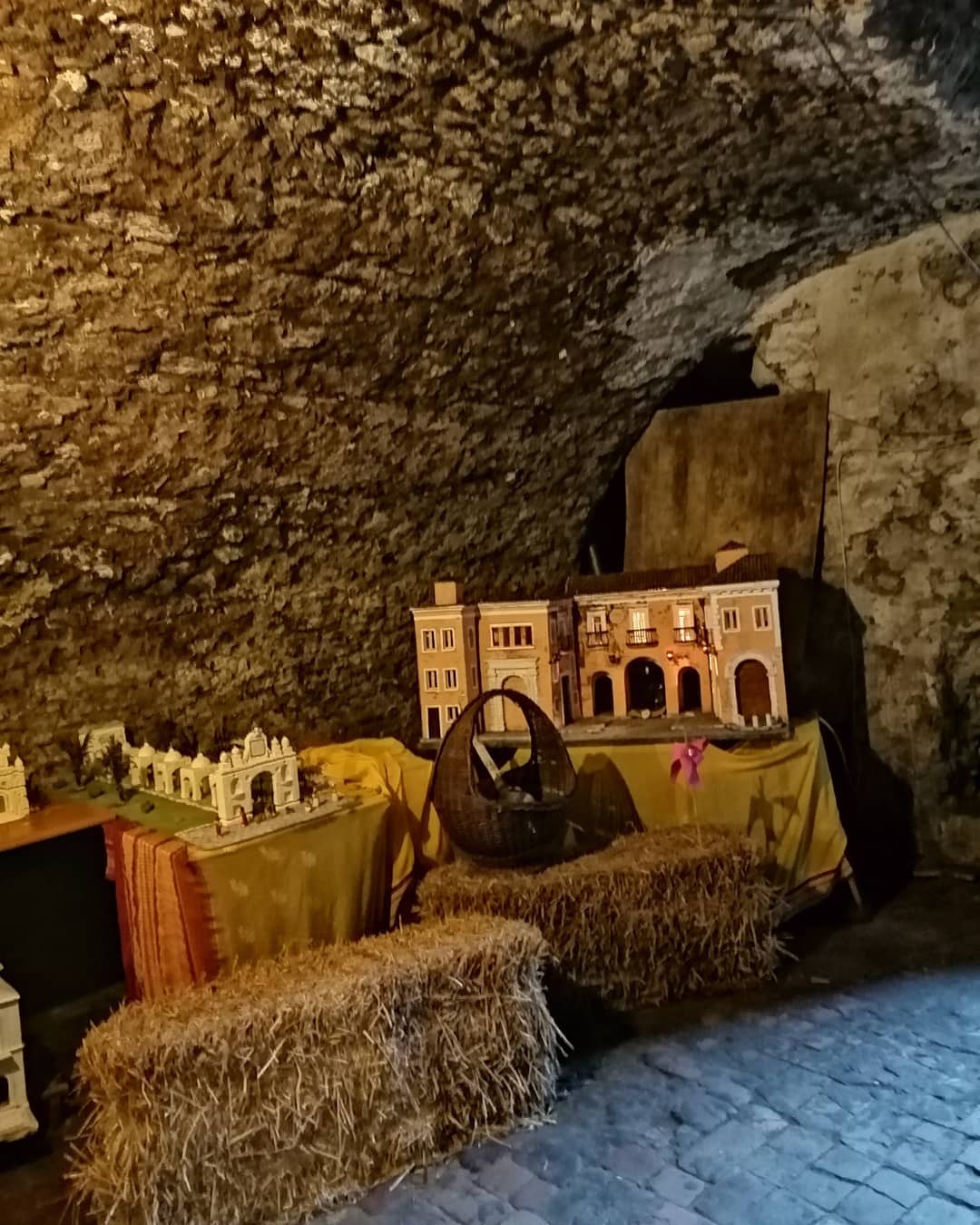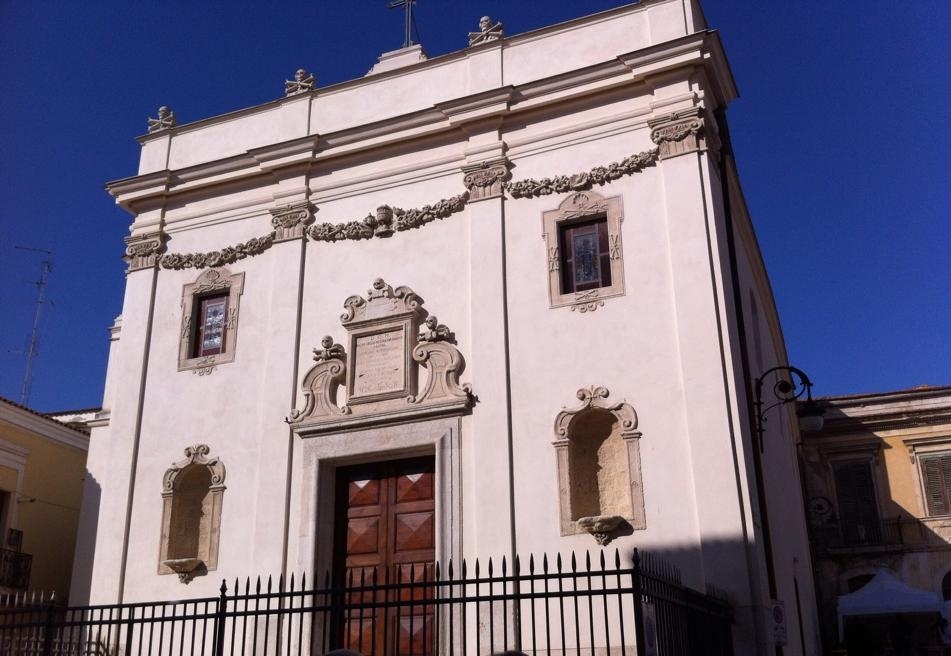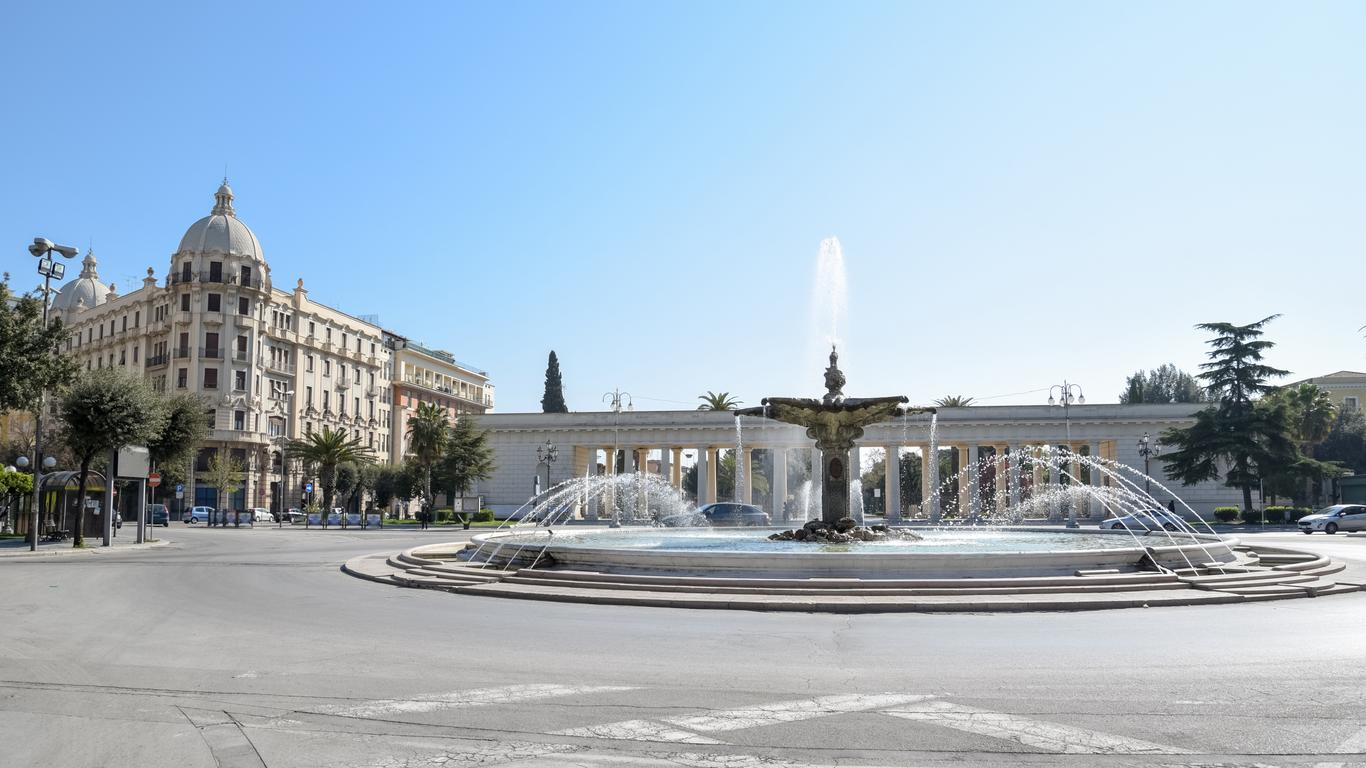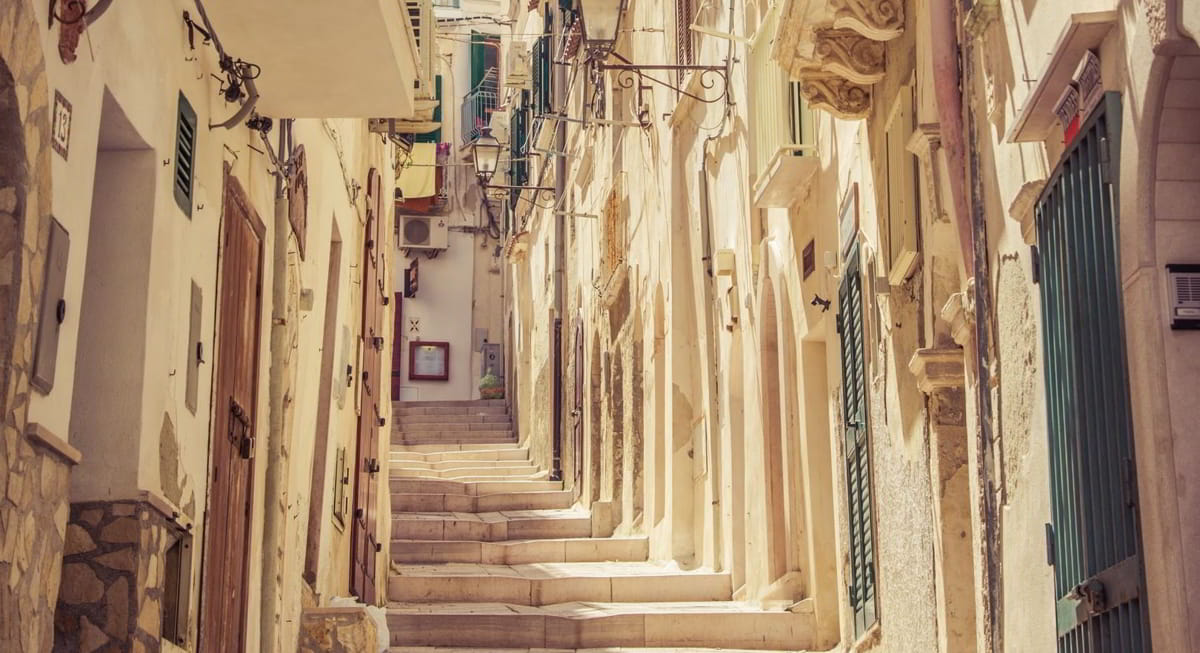The city of Foggia is amix of traditions, colors, churches, history, little-known places, legends, and lots of folklore. Visiting it all in one day is almost impossible, there are so many points of interest that deserve to be fully appreciated. Foggia is located in Puglia Italy, about 20 miles from the Adriatic coast. Crossroads of different cultures, “granary of Italy“, Foggia develops in the center of the Tavoliere delle Puglie, a few kilometers from the Adriatic and the Subappennino Dauno. Experience the city of Foggia as a visitor and not as a tourist, get lost in the alleys of its historic center, and walk with your nose turned up through its streets where the great emperor Frederick II once walked. If you intend to spend a few days in the capital of Dauno, all you have to do is continue reading this article to find out beautiful places to visit in Foggia Italy.
1. Cathedral of Foggia

In Piazza De Sanctis, in the heart of the historic center of Foggia , stands the Cathedral . It is one of the most beautiful and majestic monuments of the Daunian capital that we recommend you visit. Surrounded by pubs and bars, the church of the Blessed Virgin Mary of the Assumption was built way back in 1170 in Apulian Romanesque style at the behest of the King of Sicily William the Good and then subsequently restored after the 1731 earthquake in baroque. This ancient sacred building is linked to the discovery of the Iconavetere which marks the birth of the city of Foggia itself and which is kept inside.
2. The Hypogea

The subsoil of the historic center of the city of Foggia is crossed by a long series of underground environments. These are hypogea and cellars which, mixing eras and functions, reach up to Frederick II and his famous Royal Palace , which is thought to have extended precisely in that area. The wells for harvesting grain and the construction techniques of the walls, found under Piazza Purgatorio, were in fact dated to the medieval period. The most important hypogeum is that of via San Domenico.
3. Jordan Theater

Designed between 1825 and 1828 by the engineer Luigi Oberty , in a romantic neoclassical style, the Teatro Giordano is a clear example of an Italian theater with a typical horseshoe shape. The beating heart of the cultural life of Foggia since the 1800s, the Teatro Comunale di Foggia is an elegant and refined place that still hosts cultural events of great resonance. This place is one of things to do in Goggia Italy.
4. Regional Natural Park of Foggia

Established in 2006, the park is about 12 kilometers from the city and is a protected area, home to numerous species of birds, but also mammals, fallow deer, wild boars and various reptiles. In addition to Bosco Incoronata, the area includes ” Valle del Cervaro ” and the Sanctuary of the Madonna dell’Incoronata , a well-known destination for pilgrimages. Furthermore, it is also possible to prohibit the various sites of technical-scientific studies for the identification of rare flora species.
5. Church of Maria Santissima della Misericordia

In the heart of the historic center, recently restored, the Church of Maria Santissima della Misericordia is certainly among the most evocative sacred buildings in Foggia. This characteristic church built on the hypogea of the ancient Frederick’s palace, was built in 1645 and then enlarged in 1650. Built by the religious congregation of the Whites, one of the many religious congregations of the city which had the task of burying those sentenced to death, it is also called the Church of the Dead due to the particular internal and external decorations in which reproductions of human bones intertwined with skulls can be seen.
6. Piazza Cavour and the Sele Fountain

The main entrance to the Villa Comunale overlooks the very central Piazza Cavour and its undisputed protagonist: the Fontana del Sele . Perfect postcard of the city, the nineteenth-century Piazza Cavour with its Fontana del Sele is certainly the symbol par excellence of the city. Inaugurated on 21 March 1924 in front of the Sacred Icon of the Madonna dei Sette Veli, the splendid fountain in Piazza Cavour was built in reinforced concrete to a design by the engineer Cesare Brunetti.
7. Historic Center of Foggia

Walking through the narrow streets of the historic center of Foggia means taking a journey through history and tradition. Not far from the railway station, the heart of the city opens up among ancient and romantic 18th century buildings, monuments and symbols of the city’s history. Among the buildings that deserve to be mentioned, we point out Palazzo De Vita-De Luca , on the corner of via Arpi and Vico Peschi , right in front of piazza De Sanctis. With its romantic and mysterious air it will capture your attention.
8. Church of the Crosses
https://bestplacesnthings.com/wp-content/uploads/2023/08/Church-of-the-Crosses.jpg
The church of the Crosses is a national monument. Behind the construction of the church there is one of the most significant legends of the city, which sees the Capuchin father Antonio da Olivadi, begin his religious work in order to restore hope to the poor people of Foggia, bent by drought. Then one day, after a sermon, he started a procession and miraculously it started to rain. Along the journey, which was at the crossroads between the two most important roads for transhumance, he planted seven wooden crosses. Church of the Crosses is listed from us as one of beautiful places to visit in Foggia Italy.
9. Palace of the Aqueduct

Among the most fascinating buildings in Foggia there is certainly the Palazzo dell’Acquedotto , a historic building designed in 1926 by the engineer Cesare Brunetti (the same one as the Fontana del Sele) in Art Nouveau style . Completed in 1932, it is still today one of the most prestigious buildings in the city of Foggia and certainly one of the most characteristic due to the presence of two domed towers.
10. Civic Museum and Municipal Art Gallery

In the center of Foggia, in the halls of Palazzo Arpi in Piazza Nigri (where Federico II’s imperial palace was built in 1223), you can visit the Civic Museum and the Municipal Art Gallery. Established on 28 October 1931, they contain important archaeological treasures of the city of Foggia from the Neolithic period to the imperial age. By visiting the halls of the Civic Museum and the Municipal Art Gallery you can admire various finds, Daunian ceramics, and ancient works divided by section. The rooms of the Museum host an archaeological section, an ethnographic section, an art gallery with works from the 18th and 18th centuries, a section dedicated to prints, a lapidary, and the reconstruction of two archaeological treasures or two Daunian tombs from the 4th-3rd century BC: the Tomb of the Medusa and the Tomb of the Knight.
Summary list of the places to visit in Foggia
- Cathedral of Foggia
- The Hypogea
- Jordan Theater
- Regional Natural Park
- Church of Maria Santissima della Misericordia
- Piazza Cavour and the Sele Fountain
- Historic center of Foggia
- Church of the Crosses
- Palace of the Aqueduct
- Civic Museum and Municipal Art Gallery
